动物行为与生态平衡
动物行为与生态平衡
Animal behaviour and ecological balance
Article 1:
Title: Termites mitigate the effects of drought in tropical rainforest
Download website:
https://science.sciencemag.org/content/363/6423/174
Main contents:
Termites perform key ecological functions in tropical ecosystems, are strongly affected by variation in rainfall, and respond negatively to habitat disturbance. However, it is not known how the projected increase in frequency and severity of droughts in tropical rainforests will alter termite communities and the maintenance of ecosystem processes. Using a large-scale termite suppression experiment, we found that termite activity and abundance increased during drought in a Bornean forest. This increase resulted in accelerated litter decomposition, elevated soil moisture, greater soil nutrient heterogeneity, and higher seedling survival rates during the extreme El Niño drought of 2015–2016. Our work shows how an invertebrate group enhances ecosystem resistance to drought, providing evidence that the dual stressors of climate change and anthropogenic shifts in biotic communities will have various negative consequences for the maintenance of rainforest ecosystems.
Results:
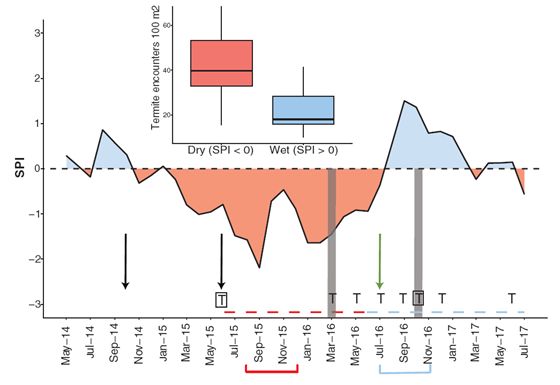
Fig. 1
Drought status during the study and timings of experiments.

Fig. 2 The effect of drought and termite suppression on four ecosystem responses.
(A) Proportion mass loss from open-mesh leaf litter decomposition bags (assessed after remaining on the forest floor for 4 months), (B) forest floor leaf litter depth, (C) soil moisture, and (D) proportion of seedlings surviving. Gray bars and white bars represent control plots and termite suppression plots, respectively, and all bars display mean values ± SE. Asterisks denote significant differences between values (see tables S3 and S4 for model outputs). Data presented are back-transformed mean predicted values from mixed effects model outputs and error bars are the back-transformed model estimates. Soil moisture (C) is presented on a log10 scale for ease of interpretation. NS, not significant.
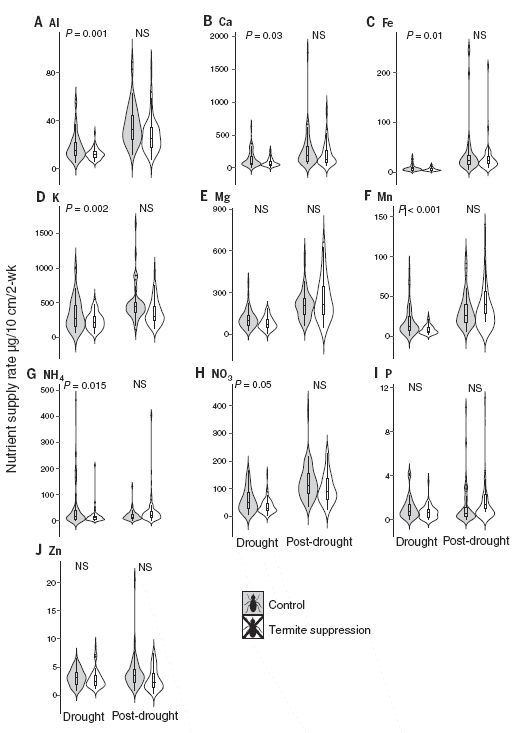
Fig. 3 The effect of drought and termite suppression on soil nutrient heterogeneity.
Extent of variability in (A) Al, (B) Ca, (C) Fe, (D) K, (E) Mg, (F) Mn, (G) NH4, (H) NO3, (I) P, and (J) Zn soil nutrient supply over a 2-week period in control (gray violins) and termite suppression plots (white violins) during drought and post-drought conditions. Plots display (i) density of data estimated by kernel method (shaded areas), (ii) median values (horizontal line in the center of the boxplots), and (iii) interquartile range (between the top and bottom of the box). Differences in heterogeneity between treatments were assessed using Fligner-Killeen test of homogeneity of variances carried out on the residuals from linear mixed effects models. P values denote significant differences between values.
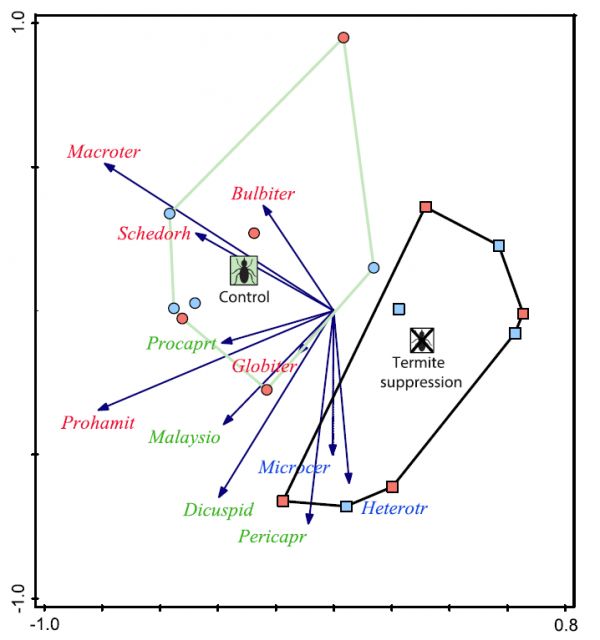
Fig. S5 Principal Components Analysis biplot showing the distribution of termite genera (arrows indicating increasing encounter rates) in relation to control versus termite suppression treatments.
Conclusion:
Although small-scale manipulative experiments have shown the importance of invertebrates in alleviating the effects of drought, our largescale data show that a major invertebrate group maintains ecosystem functioning during periods of drought, with potentially cascading consequences for plant survival. Forest disturbance is known to reduce termite abundance and diversity and, globally, more than 50% of tropical rainforests have been modified by humans: an area of more than 10 million square kilometers. Tropical landscapes that are heavily modified by human disturbance are likely to be less resistant to drought, because of a reduction in termite-mediated buffering of ecosystem processes. Our findings suggest that climate change, along with human disturbance to invertebrate communities, will have negative and interacting consequences for the maintenance of functioning rainforest ecosystems. This study provides further evidence of the importance of conserving natural ecosystems by showing that intact biological communities can safeguard ecosystem processes in a time of rapid environmental change.
图形摘要:
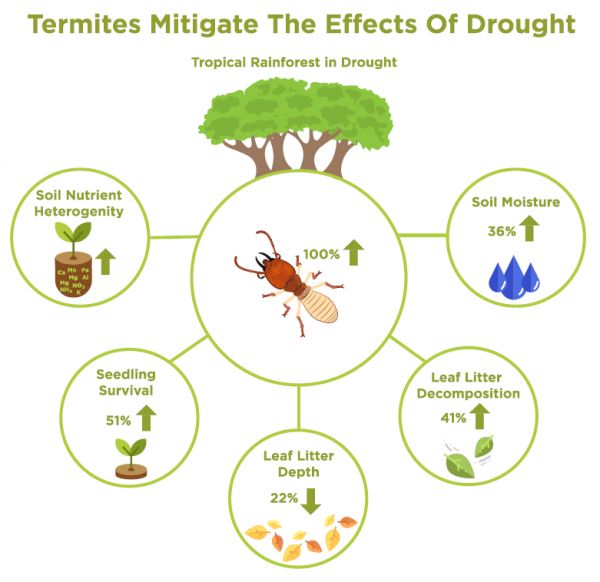
Article 2:
Title: Ant-mediated effects on spruce litter decomposition, solution chemistry, and microbial activity
Download website:
https://www.sciencedirect.com/science/article/pii/S0038071705002658
Abstract:
Forest management practices often generate clear-cut patches, which may be colonized by ants not present in the same densities in mature forests. In addition to the associated changes in abiotic conditions ants can initiate processes, which do not occur in old-growth stands. Here, we analyse the effects of ants and aphid honeydew on litter solution of Norway spruce, microbial enzyme activities, and needle decomposition in a field and greenhouse experiment during summer 2003. In the field, low ant densities had relatively little effects on litter solution 30 cm away from a tree trunk, but significantly increased organic carbon concentrations and decreased inorganic nitrogen concentrations next to a trunk where ants tend to build their nests. In a greenhouse experiment, the addition of ants to lysimeters containing spruce litter significantly increased dissolved organic carbon (DOC), dissolved organic nitrogen (DON), NH4–N, NO3–N and K concentrations in litter solutions compared to the control treatment, while the simulation of aphid infestation (addition of honeydew) significantly increased DOC as a direct result of honeydew leaching, and decreased inorganic N concentrations in leachates. The presence of ants resulted in a changed composition of dissolved organic matter (DOM) with more aromatic and complex compounds, and microbial enzyme activity was significantly higher in litter extracts from the ant treatment compared to the honeydew and control treatment. However, mass loss, litter %C and %N were not affected by ants or honeydew. Our results suggest that ants have a distinct and immediate effect on solution composition and microbial activity in the litter layer indicating accelerated litter decay whereas the effect of honeydew was insignificant.
关注观点:
1、蚂蚁影响了凋落物层的溶液组成和微生物活性;
2、直接活动&与蜜露的营养关系。
归纳主题:
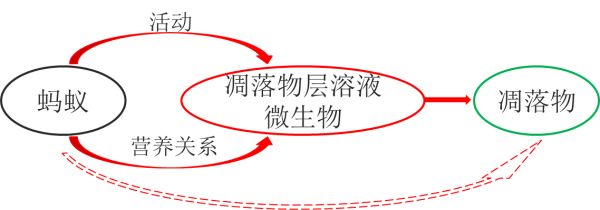
Contact: Luo Yunchao
E-mail: luoyunchao@outlook.com; luoyunchaolyc@qq.com
相关知识
动物行为与生态平衡维持.pptx
松鼠行为模式与生态平衡探讨
动物行为与社会生态.pptx
动物行为与社会生物学.pptx
动物行为与保护生物多样性.pptx
动物的行为与适应性.pptx
动物的行为与习性.pptx
动物的行为与习性
动物行为导论与动物学基础.pptx
动物行为与适应.pptx
网址: 动物行为与生态平衡 https://www.mcbbbk.com/newsview506430.html
| 上一篇: 捏住老虎的后颈,它会像猫一样变乖 |
下一篇: 22动物生态 |
推荐分享

- 1养玉米蛇的危害 28694
- 2狗交配为什么会锁住?从狗狗生 7180
- 3我的狗老公李淑敏33——如何 6236
- 4豆柴犬为什么不建议养?可爱的 4637
- 5南京宠物粮食薄荷饼宠物食品包 4563
- 6中国境内禁养的十大鸟种,你知 4429
- 7湖南隆飞尔动物药业有限公司宠 4259
- 8自制狗狗辅食:棉花面纱犬的美 4257
- 9家养水獭多少钱一只正常 4212
- 10广州哪里卖宠物猫狗的选择性多 4122






